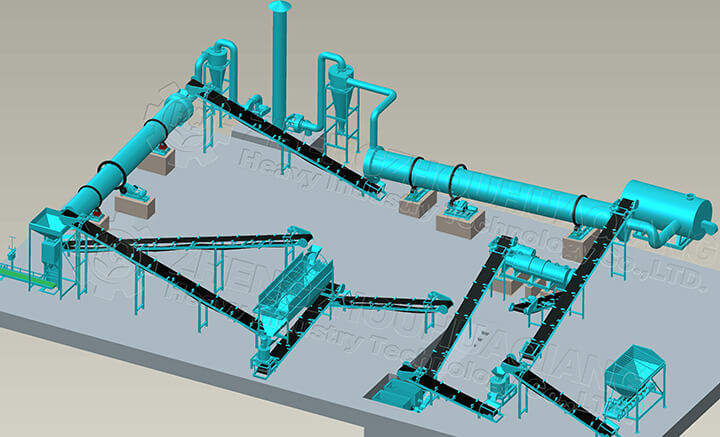Amid the wave of green agricultural transformation, bio-organic fertilizer production lines have become a key link between agricultural waste recycling and soil fertility improvement. Through scientific processes, they transform agricultural waste such as livestock and poultry manure, straw, and mushroom residue into highly efficient and environmentally friendly organic fertilizers, injecting strong momentum into the sustainable development of modern agriculture.

The core processes of a bio-organic fertilizer production line are closely linked, demonstrating the wisdom of technological empowerment. First, in the raw material pretreatment stage, workers sort the collected agricultural waste to remove impurities. Then, pulverizers break down the straw, mushroom residue, and other materials into uniform particles. These particles are then mixed with livestock and poultry manure in appropriate proportions, adjusting the carbon-nitrogen ratio and moisture content to prepare for subsequent fermentation. Next, the mixture enters the high-temperature aerobic fermentation stage, where it is fed into fermentation tanks or vats. Under the action of specialized microbial strains, the mixture undergoes 7-15 days of fermentation and composting, maintaining a constant temperature of 55-65°C. This not only effectively kills harmful bacteria, insect eggs, and weed seeds, but also converts organic matter into nutrients that are easily absorbed by crops.
After fermentation, the material undergoes further processing to enhance its quality. It first passes through a drum screening machine to remove uncomposted impurities. Then, based on market demand, it is granulated into organic fertilizer pellets using a granulator. Finally, it enters a drying and cooling system to control the moisture content of the pellets to below 15%, ensuring stable storage. Automated packaging machines are used for precise metering and sealed bagging, ensuring both product quality and transport convenience.
This production line not only transforms agricultural waste into valuable resources, digesting large quantities of livestock and poultry manure and straw annually, reducing non-point source pollution, but also produces bio-organic fertilizer rich in organic matter and beneficial microorganisms. The application of this fertilizer improves soil structure and increases soil aeration, reduces the use of chemical fertilizers, and enhances the quality of agricultural products. This creates a green cycle of "waste - organic fertilizer - high-quality agricultural products," providing solid support for promoting the ecological and large-scale development of agriculture.